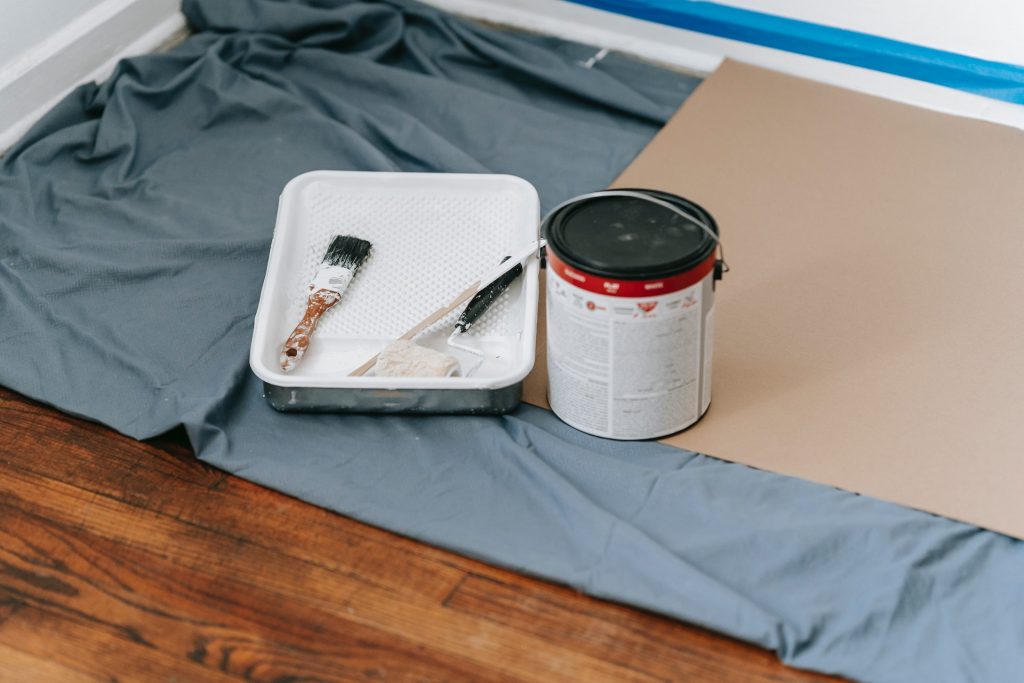Painting your house is a big project that requires careful preparation to achieve the best results. Whether you’re repainting a room or the entire exterior of your home, the preparation stage is crucial to the success of your project. A well-prepared surface ensures that the paint adheres properly and leads to a smoother and more even finish.
This blog post will cover the key steps to properly prepare your house for painting, from cleaning the surface to protecting your surroundings. By preparing properly, you’ll set yourself up for a successful and satisfying painting experience. So, before you pick up the brush, let’s dive into what you need to do to get your house ready for painting.
Cleaning the Surface
Cleaning the surface of your house is one of the most important steps in preparing for a painting project. It’s important to remove any dirt, grease, and grime from the surface so that the paint adheres properly and has a smooth, even finish. Here are the key steps to take to clean the surface:
Removing dirt, grease, and grime:
- Remove any loose dirt or dust by wiping the surface with a damp cloth.
- For stubborn dirt and grease, use a degreaser or all-purpose cleaner specifically designed for use on your surface.
- Follow the manufacturer’s instructions for the best results.
Repairing cracks and holes: Any cracks or holes in the surface should be repaired before painting. This will ensure that the paint goes on smoothly and that the repair is not visible once applied. Use a filler or spackling compound to fill in any cracks or holes, then sand the surface smoothly.

Sanding rough surfaces: If the surface is rough, sand it down with fine-grit sandpaper until it is smooth to the touch. This step is especially important for wood surfaces, which will absorb paint more evenly once they are smooth.
Power washing the exterior: If you’re painting the exterior of your house, a power wash is a great way to remove dirt and grime. Power washing can also help to remove any loose paint or debris from the surface. Follow the manufacturer’s instructions and use the appropriate pressure setting for your surface.
Repairing Damage
Repair any damage to your house before you start painting for an even and smooth paint job. The following steps will help you repair the damage:
Fixing cracks and holes: Fill any cracks or holes in the surface with a filler or spackling compound, then sand the surface smoothly. If the crack or hole is too large to be filled, consider replacing the damaged section with a new piece of siding or trim.
Replacing damaged siding or trim: If a section of siding or trim is damaged or rotten, it’s best to replace it before painting. This will ensure that the repair is not visible once the paint is applied and that the surface is in good condition for the paint to adhere to.
Sealing knots and cracks in wood surfaces: If you’re painting a wood surface, it’s important to seal any knots or cracks to prevent paint from seeping in and causing unsightly blemishes. Use a sealer specifically designed for use on wood surfaces to seal knots and cracks before painting. This will also help to prevent moisture from penetrating the wood and causing further damage.
Protecting Surroundings
While painting, it’s important to protect your surroundings to ensure that you don’t damage your furniture, floors, or other surfaces. Here are the key steps to take to protect your surroundings, according to painternewcastle.com:
Covering furniture and floors: Cover any furniture and floors in the painting area with drop cloths or plastic sheeting to protect them from paint drips and splatters. If necessary, move the furniture out of the room altogether.
Taping off trim and windows: Use painter’s tape to cover any trim, moulding, or windows in the painting area. This will help prevent paint from getting on these surfaces and make cleaning up easier once the painting is complete.

Using drop cloths: Use drop cloths or plastic sheeting to cover the floor and surfaces you don’t want to paint. Drop cloths are especially helpful for catching paint drips and splatters, making clean-up easier.
Removing switch plates and outlet covers: Remove any switch plates and outlet covers in the painting area to prevent paint from getting on them. You can also use painter’s tape to cover the switch plate or outlet and protect it while painting. This will also make it easier to clean up once the painting is complete.
Preparing your house for painting is essential to ensure a successful paint job. By cleaning the surface, repairing any damage, and protecting your surroundings, you’ll achieve a smooth, even paint finish that will last for years. Remember to take your time and follow these steps carefully, and you’ll be able to transform the look of your home with a fresh coat of paint.